
Speculation via banana leaves and copper tape.
I was still thinking about how to factor in that cultural perspective when I recalled Kinky Kashyam, a duo based in New York and Toronto who create surreal artefacts or objects of design fiction that are tongue-in-cheek representations of South Indian culture. Shashwath, who I know personally from my exchange semester last sem, is a product design student at The New School. Through Kinky Kashyam, he creates these mish-mashes of Western and South Asian objects. Some interesting ones to me were:
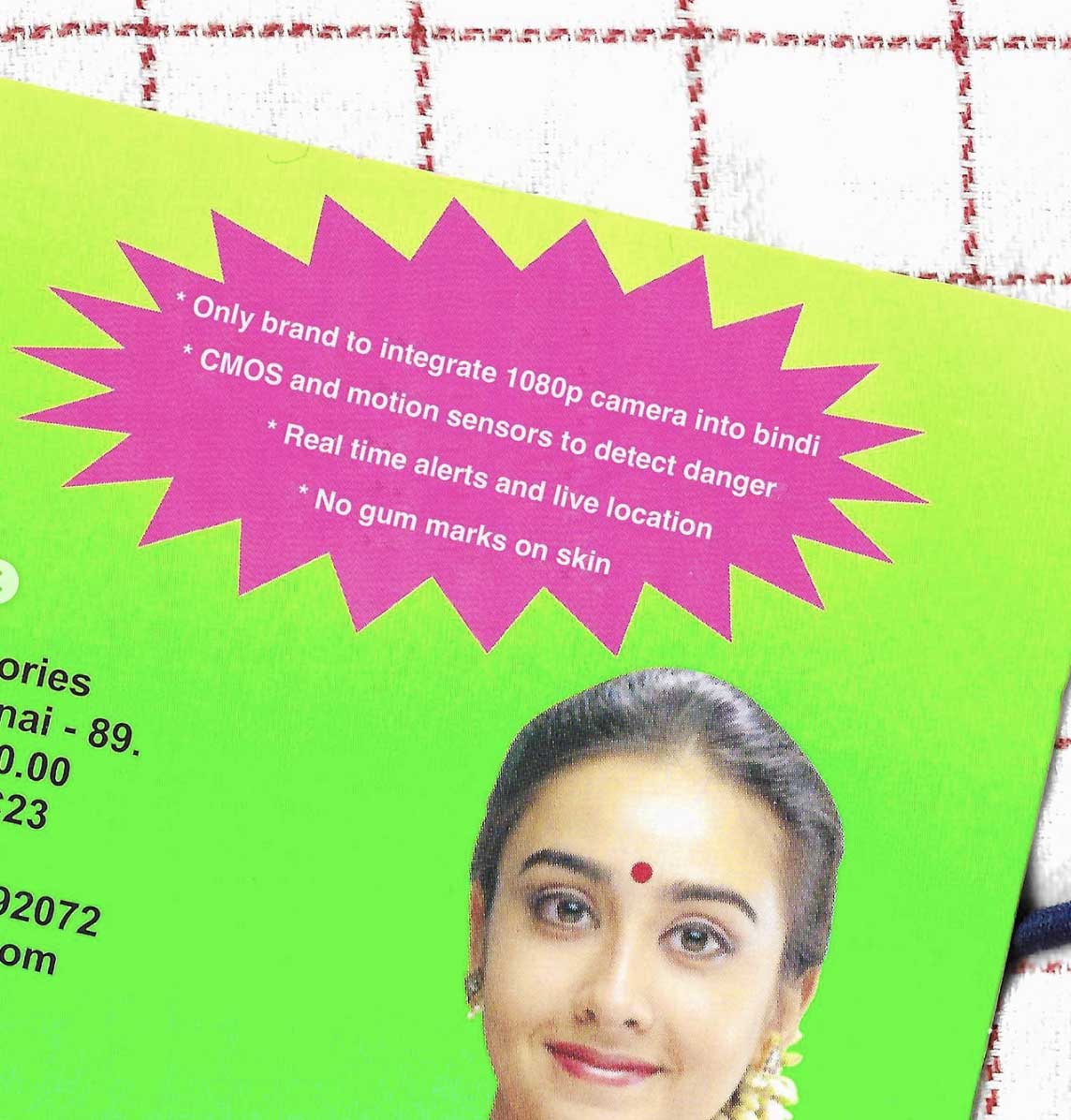
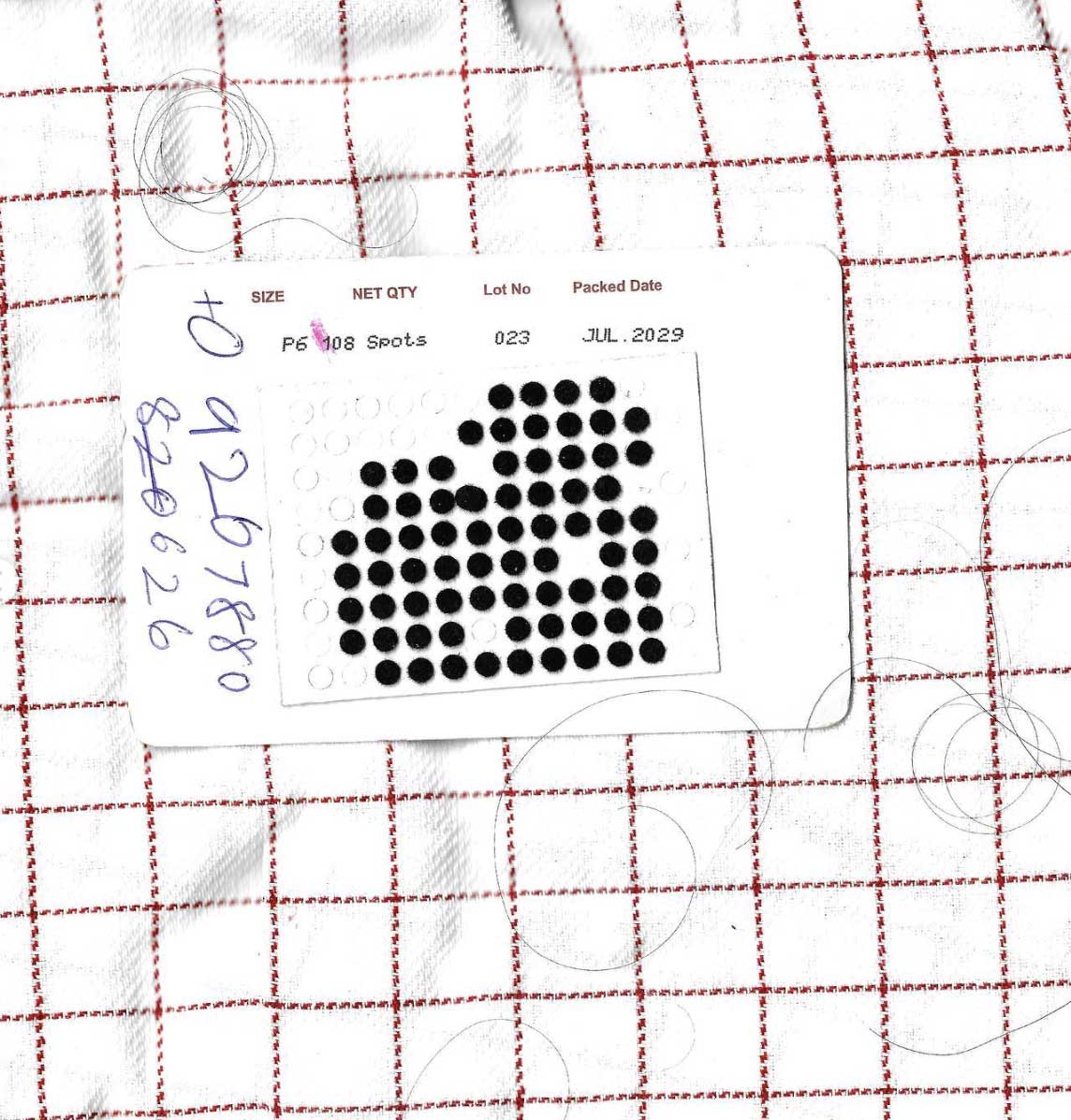
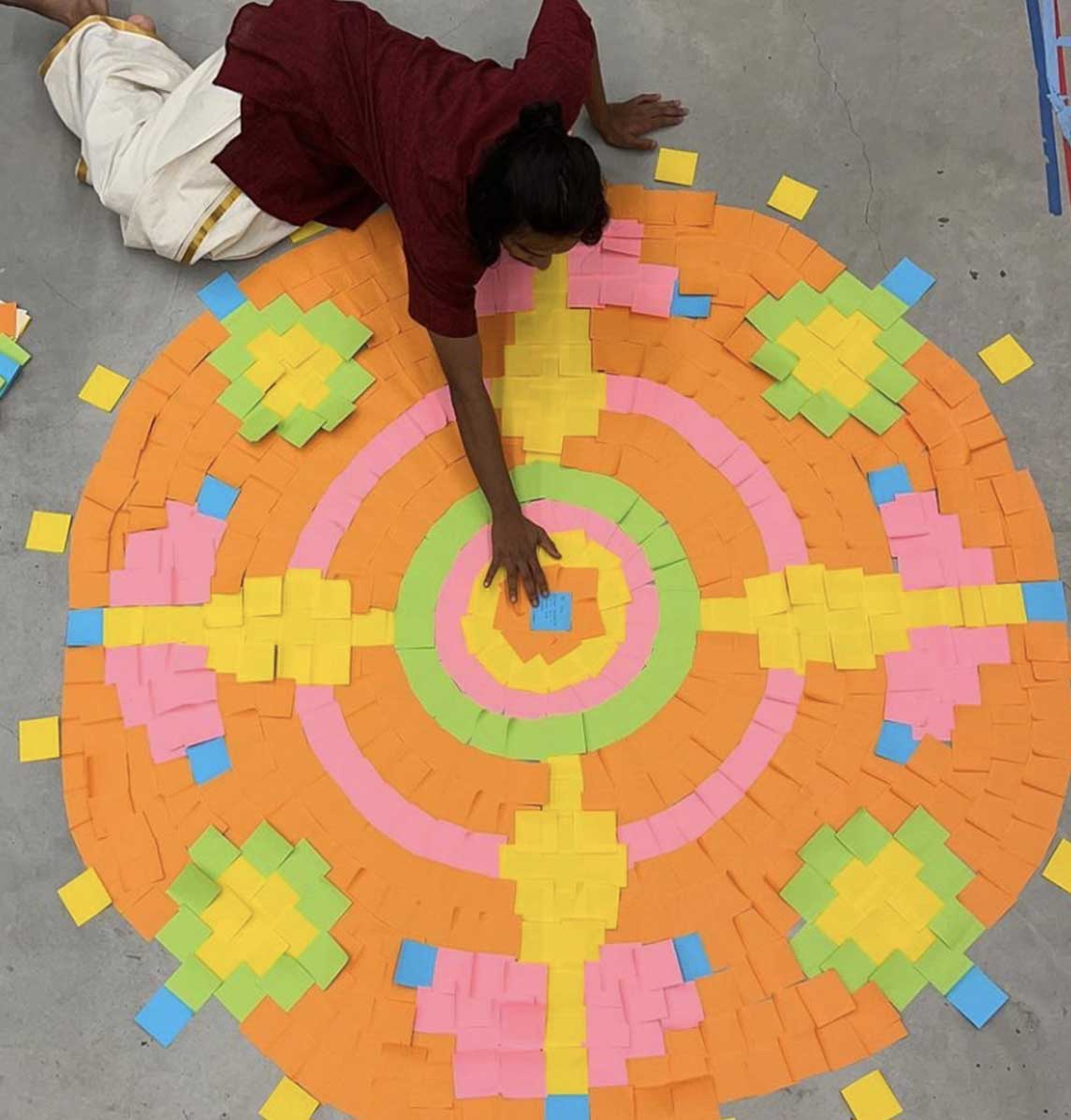
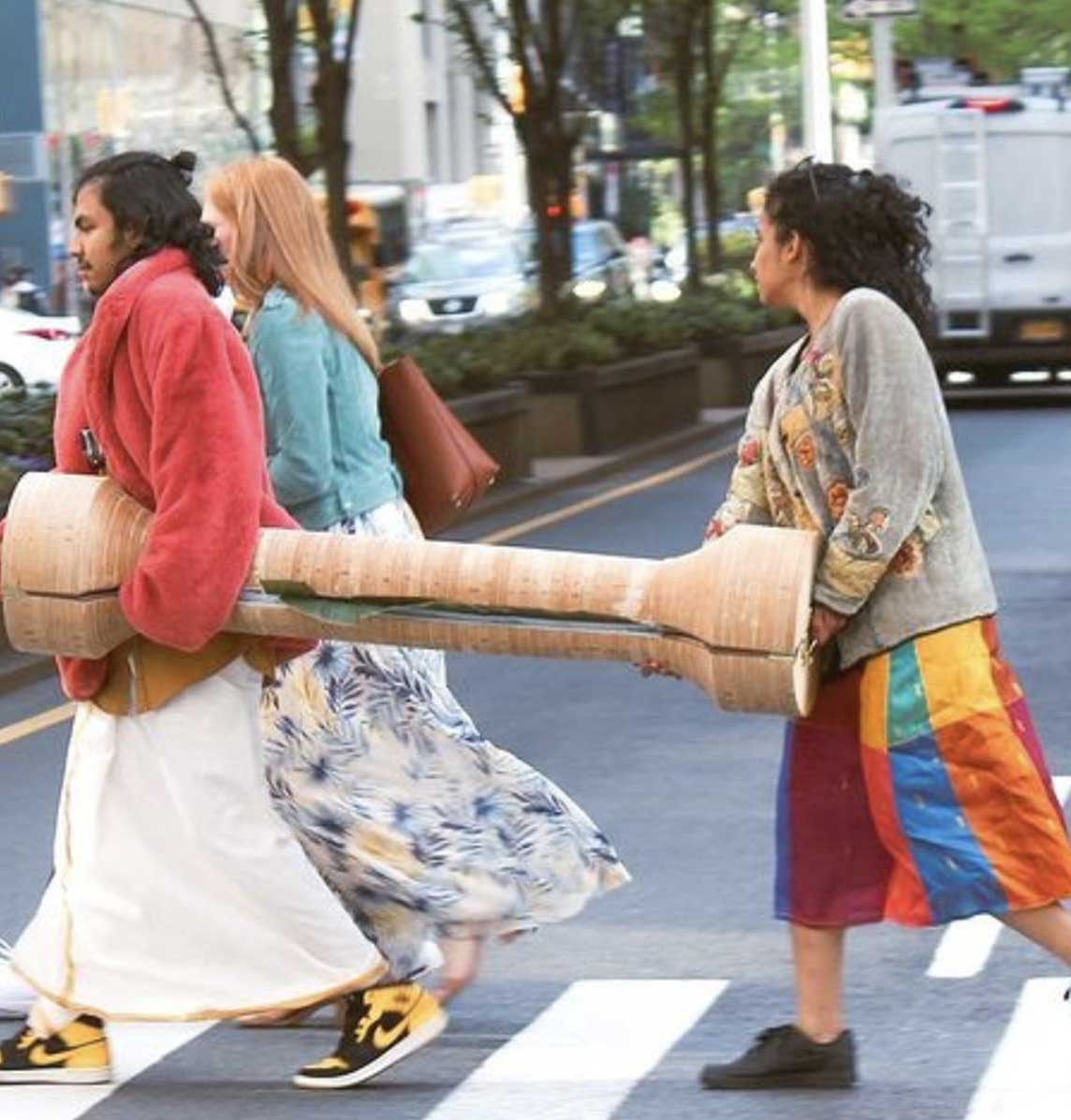
Their work is fun while still making its point about serious issues like identity and culture, and I think evoking a sense of humour draws your audience in and keeps them interested for longer.
I also think back to semester 1, year 1, probably the first couple of weeks of Computation in Design as a module, where we had to conceptualise the basics of a machine that accepted an input, processed it, and produced and output. Mine was this Roomba that collected hair on the floor in households and turned them into oil-catching ocean floating devices, haha. I recall being influenced by the universal South Asian experience of having thick, dense hair but a lot of hair fall as well.
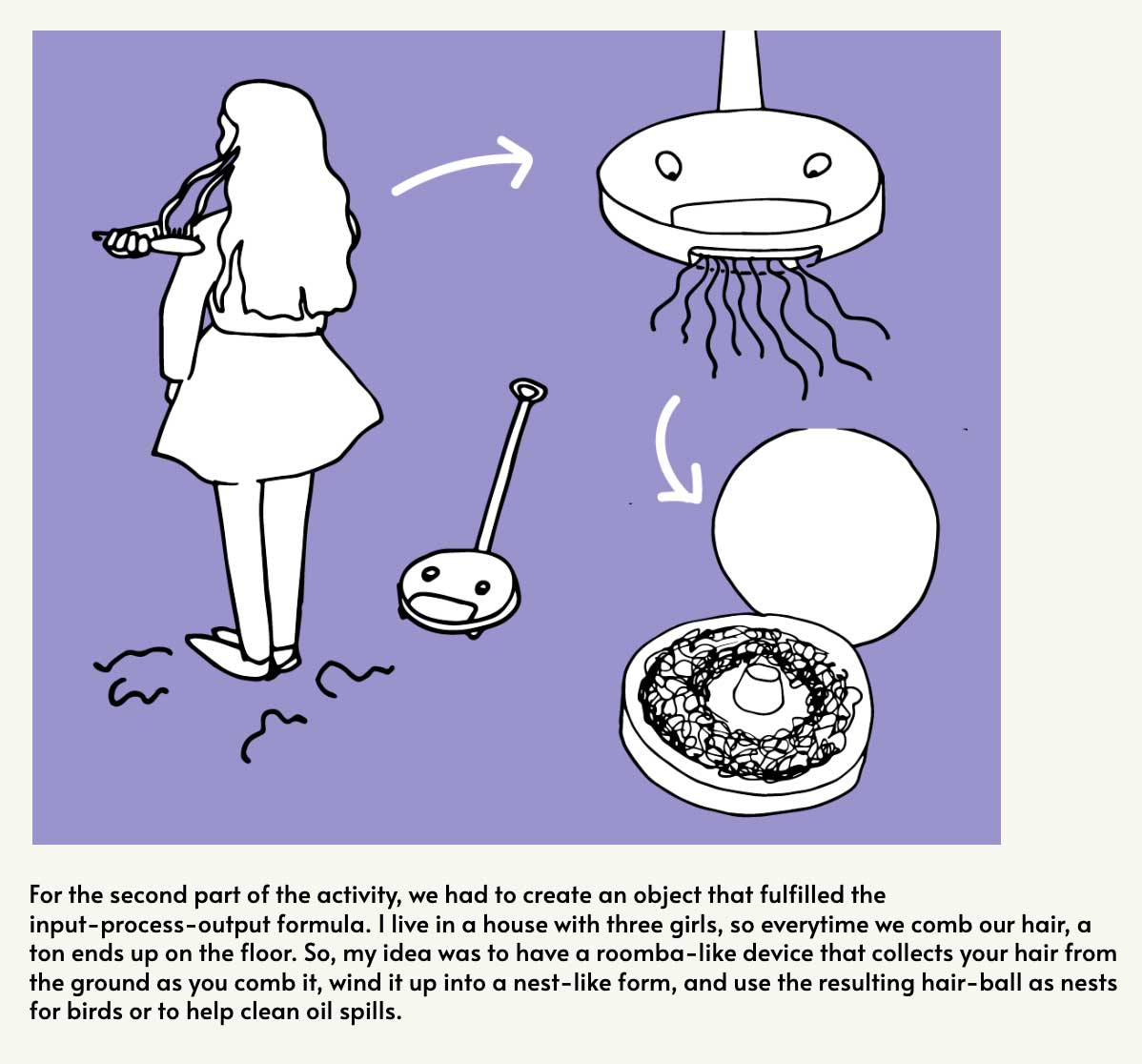
I think these objects, while entirely speculative and fictional in nature, raise questions about Indian culture being integrated into or even lost within emerging Western cultures in the midst of globalisation. They also invoke a sense of nostalgia, allowing us to reminisce about our childhoods. This whole notion of lost identites or pasts can also be melancholy or depressing, so having humour is always a good thing!
Collecting responses.
My question at the moment is, can I isolate objects in nature that have cultural significance to us and turn them into interfaces? Can I create these absurd, augmented artefacts as surreal thinkpieces?
As a starting point, I decided to ask my studio mates a basic question, and their responses are outlined below:
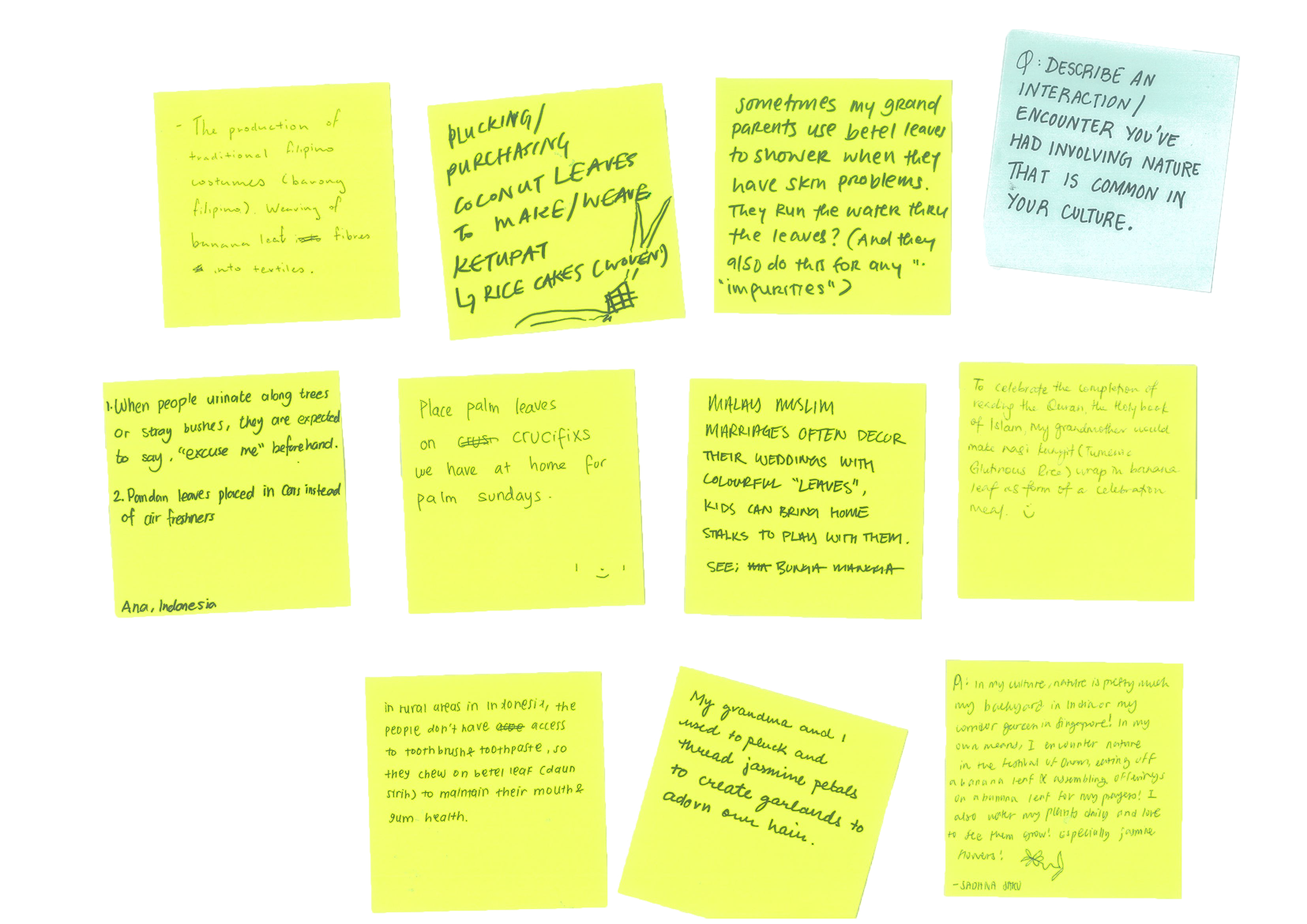
Even though my specific focus would be Bengaluru or South Asia, I also asked my studio mates whether they were India, Malay, Filipino or Indonesian. Something I found particularly interesting was the recurrence of leaves in everyone’s answers: they can be really versatile in terms of size or tactility. I also noticed, specifically in my answer and Sadhna’s answer, that jasmine flowers as decoration for our hair was also something in common (we’re both Indian!).
So I now had two objects that I could work off of: a banana leaf, used as a surface for us to eat food on during festivities and weddings (in a South Asian context) and jasmine petals or flowers. What I am keen to do is explore how I can turn these objects into interfaces: for instance, the banana leaf becomes a keyboard, or the jasmine flowers turn into a communication-enabling device! By doing so, I am trying to incorporate these ‘objects of culture’ into a more ingrained ubiquitous environment, by decontextualizing them from their normal situations. Furthermore, can I build a convincing narrative around these objects?
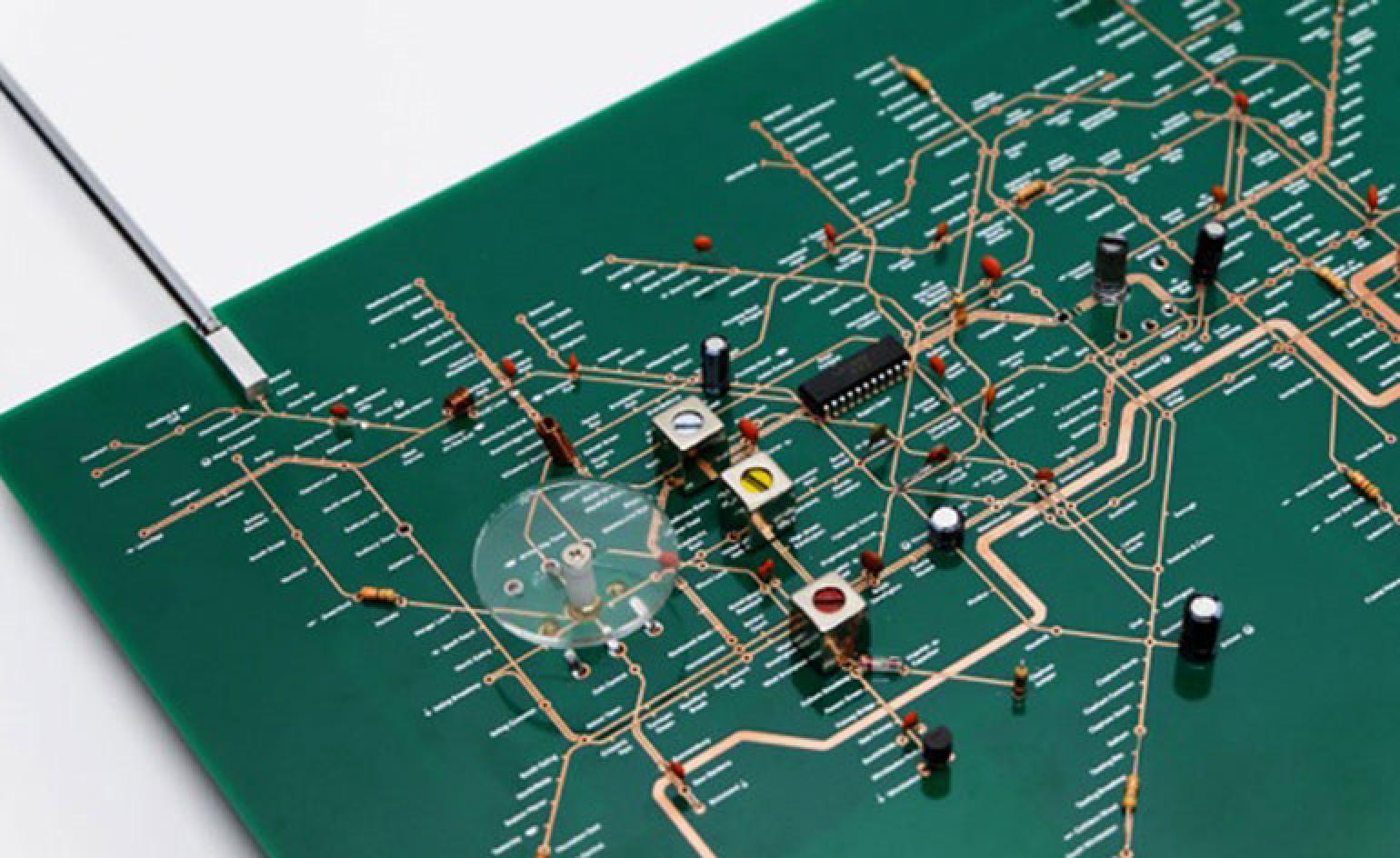
Another reference that came to mind was Yuri Suzuki's tube map: by creating a "narrative to explain how electronics work," he hopes users will be encouraged to fix their own broken devices. I plan to do more literary research on this decontextualization.
Banana leaf augumentation.
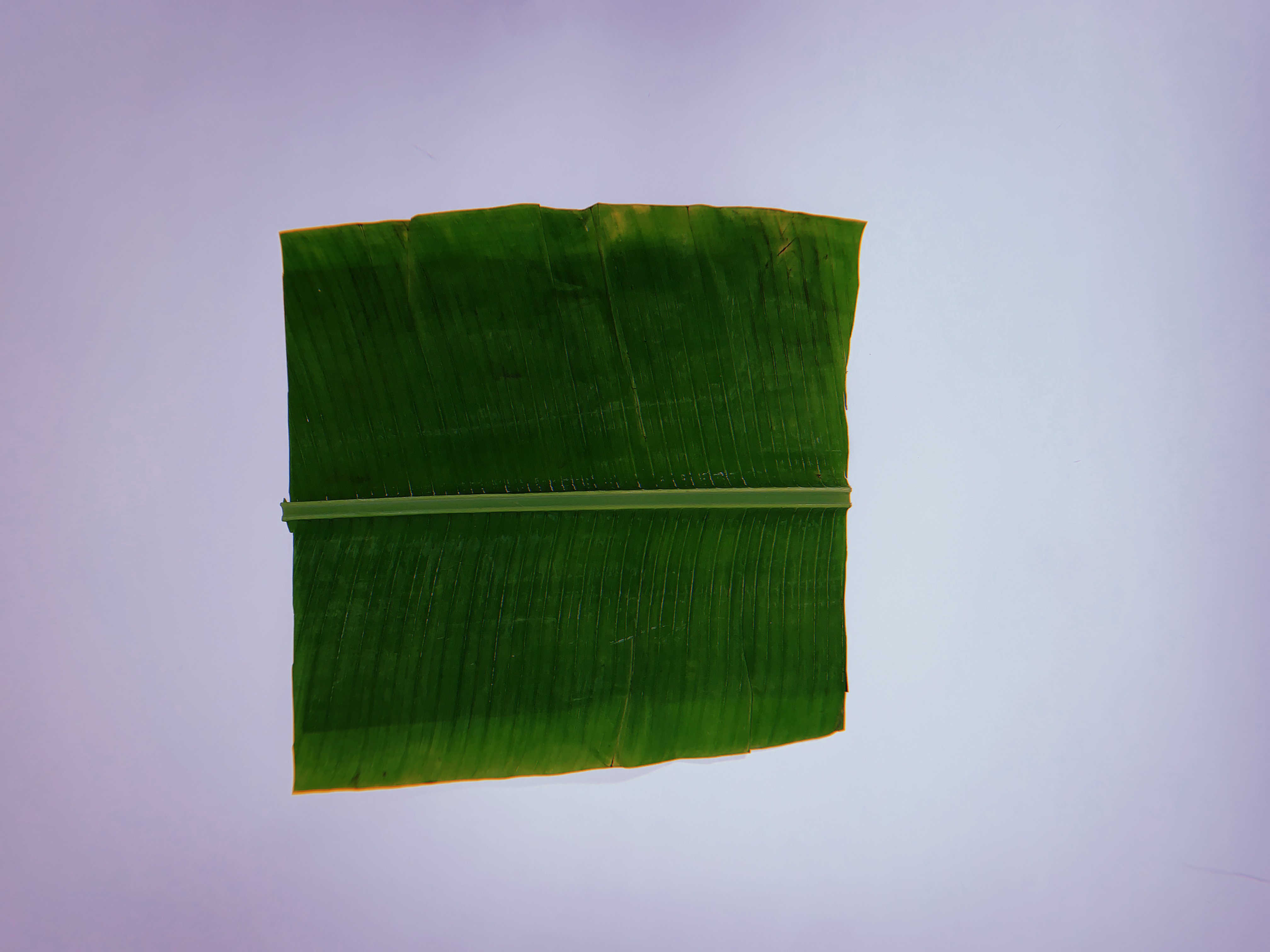
I began by visiting Little India and picking up a banana leaf (a huge one for $1, but Sadhna tells me I can get it cheaper at NTUC). I cut the leaf into a smaller segment, pictured here, and ran a copper tape down the length of the stem.
I thought, as a start, I could turn the banana leaf into a capacitive sensor and aim to use it as an IoT device or for something totally mundane: maybe a banana leaf as an alternative computer keyboard? I noticed the leaf had parallel venation which divided the entire surface into strip-like segments: perhaps each segment could correspond to a particular letter/number?
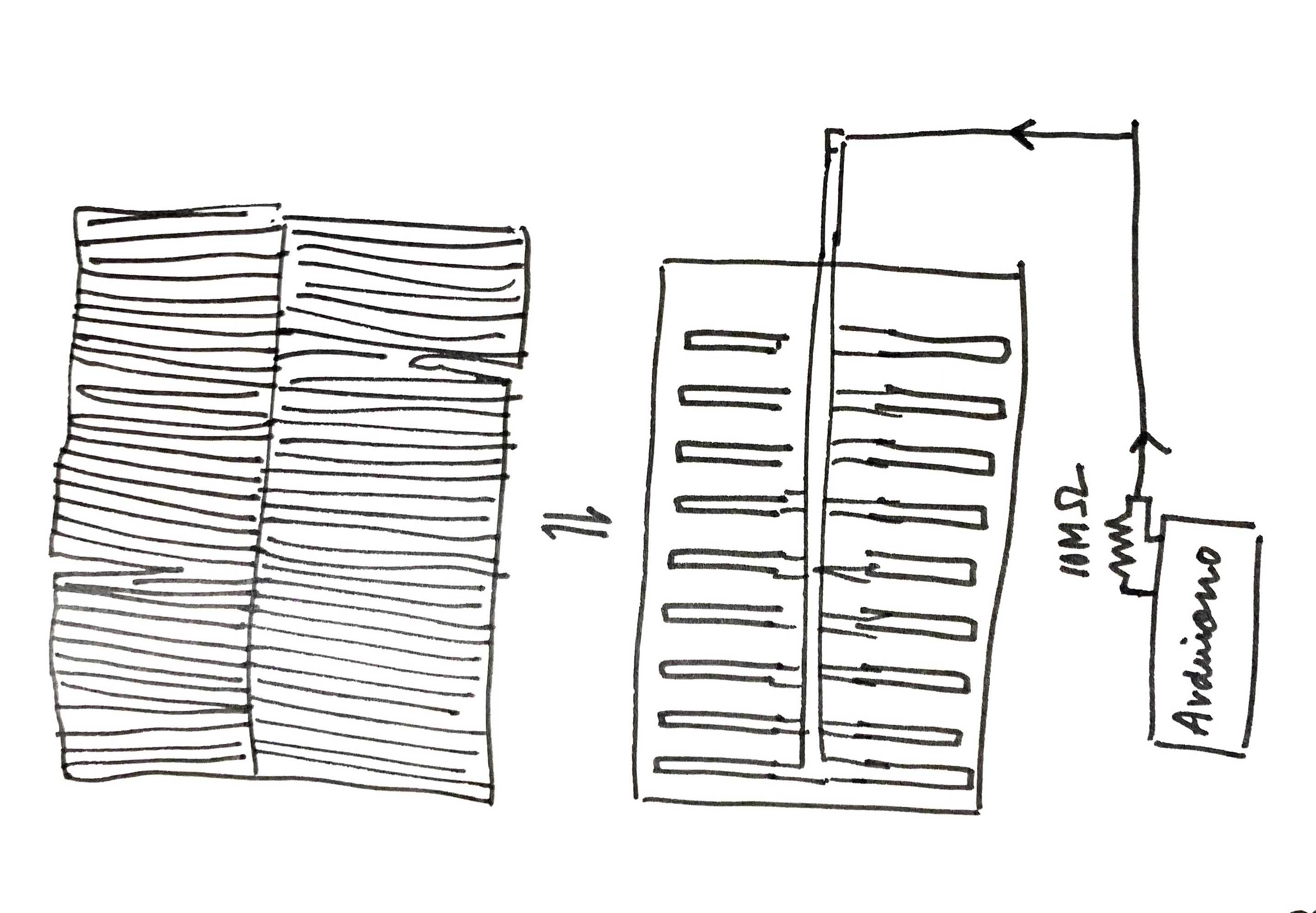
I consulted with Andreas regarding this and he mentioned that by actuating a really mundane response, like turning the leaf into a keyboard (the typing kind), people can lose interest really quick. I could instead, consider other, more exciting visual responses that imbibe more meaning to this project. He also suggested that I look into how musicians or music-focused new media artists interface music or visualise the data that they are receiving from their artefacts or instruments.
He also suggested that I could get into the nuances much more. The banana leaf I used yesterday had wilted quite a bit and shrivelled up in places.
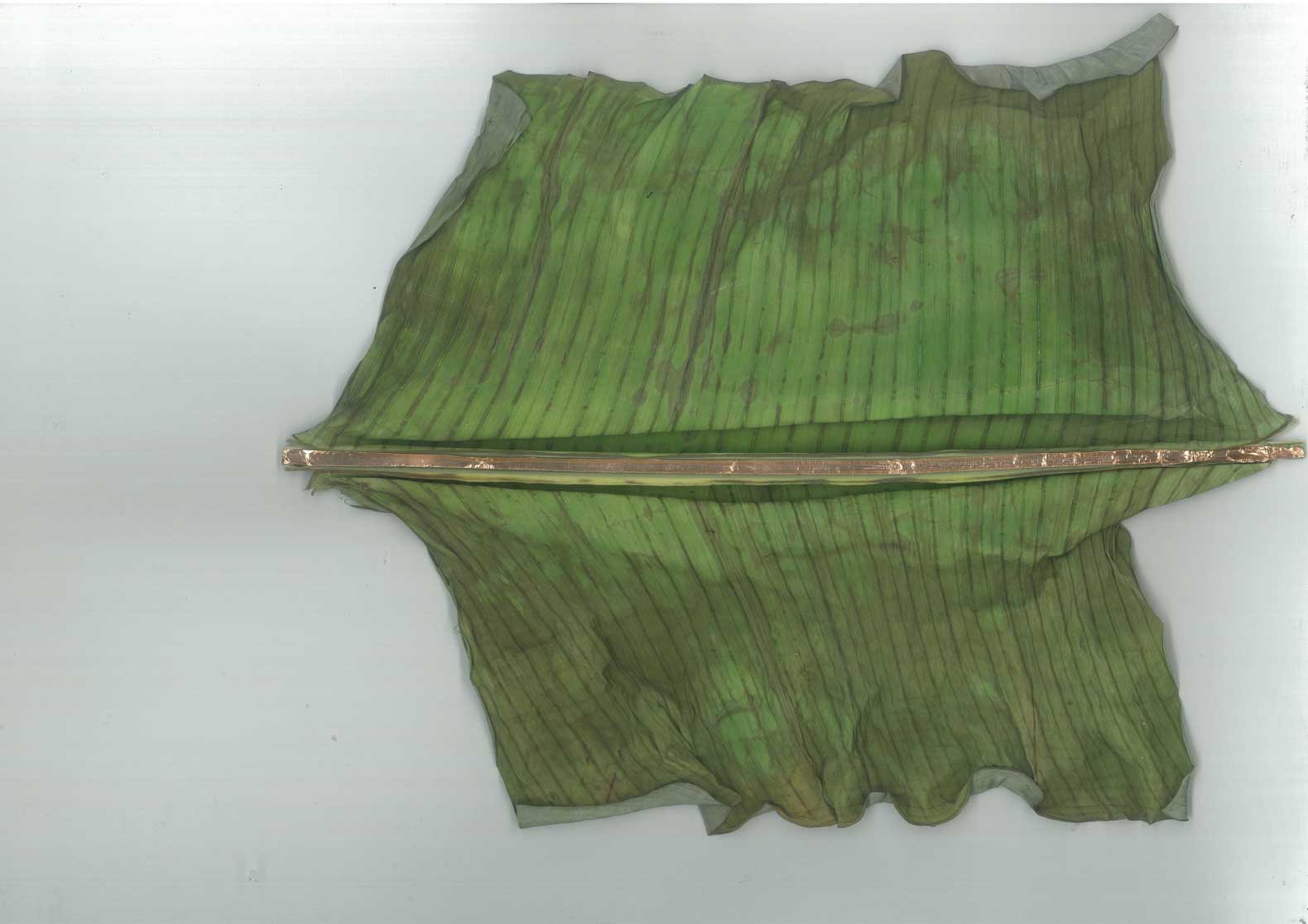
Why not try using that as an interface and examine differences in numerical output when I touch the wilted, decayed parts? That was something particularly notable to me: when dealing with living media interfaces you also have to consider organic functions like growth and decay. What happens when you’re using a plant that grows out of its confined container, or what if you forget to water your plant and it dies overnight? Can these decayed interfaces still be functional and worth anything?
So my next steps at this moment are to conduct material studies of interactions between me, the banana leaf and the computer and figure out how to visually represent this interaction.